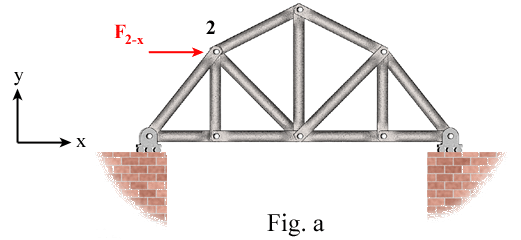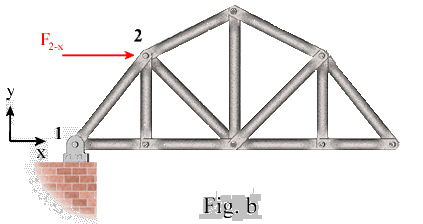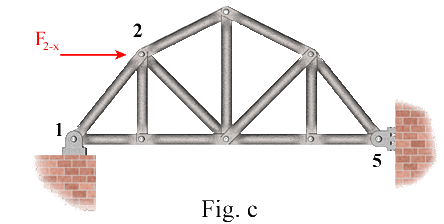Improper Supports: Equilibrium is violated under two conditions:
-
- The applied loads are not balanced (in the case of a floating
truss in space), or
-
- The truss is improperly restrained at its support
locations.
For example, the truss shown in Fig. a is not adequately restrained against translation in the x direction. Therefore, as the external force F2-x is applied, no horizontal reaction is created at either of the two supports to satisfy the equilibrium of forces in the x direction.
The trusses, shown in Figs. b and c, are not adequately restrained against rotation about the pin support at joint 1. Therefore, the moment equilibrium would be violated as a result of the applied force F2-x. This violation becomes evident by summing moments about joint 1. For the truss in Fig. b, the moment created by F2-x is not balanced by any other moment. For the truss in Fig. c, the horizontal reaction force at joint 5 has no moment arm about joint 1, therefore, it would not appear in the moment equilibrium equation.


